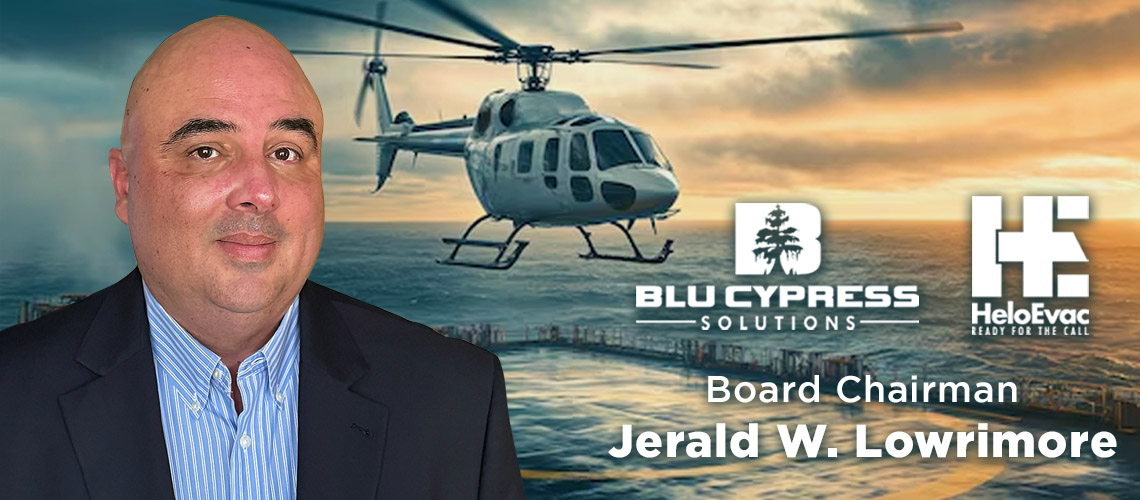I remember my time working for a construction company in the Gulf of Mexico and how rewarding it was. Back then, the sales process began when a salesman walked in with a Request For Quote (RFQ). Our team would work together to build the quote and after receiving the job, we would move into the next phase: organizing equipment, scheduling personnel, reviewing Standard Operating Procedures (SOP’s), and developing hazard assessments. When the project finally kicked off, the real challenge often began when we received that dreaded call—an employee had been injured and needed evacuation. That’s when the difficult decision of flying the injured worker came up, balancing safety and cost concerns.

Decision to Fly
The decision to fly someone in who is injured or ill is never easy. In most cases, the oil and gas operators are responsible for making the call. Many operators have assembled teams of professionals—safety personnel, medics on the platform, logistics experts, doctors on land, and emergency helicopter providers—who work together to make the best, informed decisions. According to a Bureau of Safety and Environmental Enforcement safety alert*, it takes an average of 6.8 hours from the time of an incident to the evacuee arriving at a medical facility. Every minute counts in such situations, and the right support system is crucial.
This is where Blu Cypress Solutions’ (“BCS”) HeMEP policy offers an invaluable solution:
1. With the 833-HELONOW number, we connect you to BCS’s sister company, HeloEvac, and directly to a doctor who helps make rapid decisions regarding medical evacuations.
2. HeloEvac collaborates with helicopter providers and keeps vital platform information on hand, such as helipad load ratings and exact coordinates, to streamline the process.
3. We take care of the logistics by arranging the helicopter evacuation with our providers to the appropriate onshore medical facility.

Cost
Having worked in safety, I was tasked with making these tough calls. I remember discussing evacuation details at the next morning’s meeting, only to hear the project manager say, “That flight cost us $80,000 on a project that’s only bringing in $50,000—we’re now $30,000 in the hole.” Many vendors assume the oil and gas operator will cover evacuation costs, but often those costs are passed down to the vendor. While workers’ compensation insurance may cover flight costs for work-related injuries, 75% of evacuations are for non-work-related incidents. Workers’ Compensation insurance does not cover costs for non-work-related evacuations.
This is where BCS’s HeMEP policy comes into play:
1. HeloEvac will pay the cost of a helicopter invoice within 30 days of receipt.
2. HeloEvac assumes the responsibility to seek reimbursement from either the workers’ compensation carrier or BCS.
3. The HeMEP policy offers an affordable, reliable way to cover unexpected losses without burdening your company financially.

Safety
By improving safety programs, companies can prioritize employee health and well-being. HeloEvac, as accessed through the HeMEP policy, offers a proactive solution by ensuring access to independent medical professionals who focus solely on the patient, while our streamlined processes expedite recovery and transportation to the appropriate medical facility. Our comprehensive medical facility. Our comprehensive approach, from Standard Operating Procedures to custom reporting, ensures that both vendors and operators have peace of mind and an effective solution to unexpected medical evacuations.
Purchasing a HeMEP policy is an essential step in safeguarding your company from the financial and operational disruptions that arise during medical emergencies. My experience in the Gulf of Mexico taught me the importance of preparing for the unexpected, especially when the safety and well-being of your team are on the line. BCS’s HeMEP policy not only streamlines the evacuation process, but also alleviates the financial burden of medical flights that can otherwise drain resources. By purchasing a HeMEP policy, you ensure that both your personnel and your bottom line are protected. This proactive decision empowers you to focus on the success of your project, knowing that, should the need arise, medical evacuations are handled professionally, efficiently, and without additional cost to your company.

